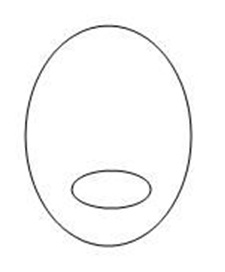In advance of his new book, 'How To Design And Deliver Great Training', Alan Matthews give us a taster of what to look forward to.
If you’re a trainer, your role is to help people learn. To do that, you need to have some understanding of how people learn so that you can give yourself the best chance of success – otherwise, it’s going to be hit and miss. You’ll find that some things work and some don’t but you won’t be sure why.
In recent years, some people have started talking about 'brain-friendly' training, which really just means training based on what we know about how the brain works, how people take in information and how they remember. It seems obvious but, if you can tailor your training to suit the way people learn, isn’t that going to make your training more effective?
One difficulty is that our understanding of these things is still developing, and very rapidly. There are lots of different theories and approaches and there's a huge amount of information out there which you could spend a lot of time going through.
I have to admit, I'm fascinated by the whole area of learning and the brain but, for the purposes of this feature, I'm going to assume that you are not. You're a busy person, training may only be part of what you do and you really just want an overview to help you understand why certain training methods are more effective than others.
So that’s what I’m going to give you. Bear in mind that this is my own interpretation and opinion.
There are several ways to approach this:
- Looking at how the brain works
- Looking at the process people go through, the stages involved in learning
- Looking at how people prefer to approach situations where they have to learn something
Here are some ideas which form the basis of most training these days. These will illustrate why I recommend certain approaches, in particular why a presentation or lecture style isn’t the most effective form of training and why you should build interaction and activity into your sessions.
How the brain works
Here are some general points about what happens when people are learning.
We look for meaning
The brain can’t help but try to impose meaning and order on new information. What do you think this is?

Your brain is working through what it might be but you don’t have much information to go on at the moment.
Let me add something. What do you think it is now?

And what about now?

Do you see part of a dog’s face? (I’ll bet you do now that I’ve mentioned it).
In fact, these are just shapes on a page. They don’t necessarily signify anything at all, but your brain won’t accept that. It tries to see some significance in them.
We do the same with written material. Read this sentence.
"Jim was shippling slowly down the street. He tightened his bajoma because the weather was crockling."
I’ve included some made-up words but I‘m sure you can still make some sense of it. Although you haven’t come across those words before, you try to give them meaning, partly by looking at the context and partly by comparing them to words which you have met before.
If you see something which, at first, doesn’t make much sense, there will be a period of confusion while your brain goes to work on it. As a trainer, you can use this but you need to be careful.
Up to a point, this can be helpful. You can make people think by presenting them with something which they have to work out. This can lead people to be curious and to pay attention to what’s in front of them. They try to make sense of it and to determine what it means. For some, this will be an interesting challenge.
But for others, and for everyone if it gets too difficult, this may just be baffling. They may give up if they can't understand the information.
If you present them with material which confuses them, they'll waste time and effort trying to impose some order onto it. Save them the trouble by making sure your material is presented logically and by setting out the context for them, i.e. give them the 'big picture' before going into the finer details of a topic.
We connect new information with existing knowledge
That's what your brain did when it tried to make sense of the shapes and the made-up words. It compared them with everything it knew which had some similarity to them. You can help people learn by making connections clear to them, by pointing out similarities or differences between what they already know and what you want them to learn.Relate new information to things people are already familiar with. Use stories which they can relate to when you introduce new material.
For example, when I used to train people in tax I would talk to them about situations they had encountered before rather than diving straight into complex legislation. If I was talking about Capital Gains Tax, which is based on the profit you make when you sell certain assets, I would start by talking about the sort of things you might own which would be worth something if you sold them. People would suggest cars, houses, shares, paintings, jewellery.
These are all examples of assets and they are all things which people have come across before.
So I was starting from the familiar before moving on to new information. This helps people to put the new ideas into context and to feel that they already have some useful knowledge about the subject.
Alan Matthews runs TransformYourTraining. You can purchase his new book, 'How to Design and Deliver Great Training' from Amazon here. He works with internal training teams to help them design and deliver exciting and engaging training. You can get a free copy of 'How To Be A Top Trainer' from www.TransformYourTraining.com and you can follow Alan on Twitter at @AlanMatthews11
In advance of his new book, 'How To Design And Deliver Great Training', Alan Matthews give us a taster of what to look forward to.
If you’re a trainer, your role is to help people learn. To do that, you need to have some understanding of how people learn so that you can give yourself the best chance of success – otherwise, it’s going to be hit and miss. You’ll find that some things work and some don’t but you won’t be sure why.
In recent years, some people have started talking about 'brain-friendly' training, which really just means training based on what we know about how the brain works, how people take in information and how they remember. It seems obvious but, if you can tailor your training to suit the way people learn, isn’t that going to make your training more effective?
One difficulty is that our understanding of these things is still developing, and very rapidly. There are lots of different theories and approaches and there's a huge amount of information out there which you could spend a lot of time going through.
I have to admit, I'm fascinated by the whole area of learning and the brain but, for the purposes of this feature, I'm going to assume that you are not. You're a busy person, training may only be part of what you do and you really just want an overview to help you understand why certain training methods are more effective than others.
So that’s what I’m going to give you. Bear in mind that this is my own interpretation and opinion.
There are several ways to approach this:
- Looking at how the brain works
- Looking at the process people go through, the stages involved in learning
- Looking at how people prefer to approach situations where they have to learn something
Here are some ideas which form the basis of most training these days. These will illustrate why I recommend certain approaches, in particular why a presentation or lecture style isn’t the most effective form of training and why you should build interaction and activity into your sessions.
How the brain works
Here are some general points about what happens when people are learning.
We look for meaning
The brain can’t help but try to impose meaning and order on new information. What do you think this is?

Your brain is working through what it might be but you don’t have much information to go on at the moment.
Let me add something. What do you think it is now?

And what about now?

Do you see part of a dog’s face? (I’ll bet you do now that I’ve mentioned it).
In fact, these are just shapes on a page. They don’t necessarily signify anything at all, but your brain won’t accept that. It tries to see some significance in them.
We do the same with written material. Read this sentence.
"Jim was shippling slowly down the street. He tightened his bajoma because the weather was crockling."
I’ve included some made-up words but I‘m sure you can still make some sense of it. Although you haven’t come across those words before, you try to give them meaning, partly by looking at the context and partly by comparing them to words which you have met before.
If you see something which, at first, doesn’t make much sense, there will be a period of confusion while your brain goes to work on it. As a trainer, you can use this but you need to be careful.
Up to a point, this can be helpful. You can make people think by presenting them with something which they have to work out. This can lead people to be curious and to pay attention to what’s in front of them. They try to make sense of it and to determine what it means. For some, this will be an interesting challenge.
But for others, and for everyone if it gets too difficult, this may just be baffling. They may give up if they can't understand the information.
If you present them with material which confuses them, they'll waste time and effort trying to impose some order onto it. Save them the trouble by making sure your material is presented logically and by setting out the context for them, i.e. give them the 'big picture' before going into the finer details of a topic.
We connect new information with existing knowledge
That's what your brain did when it tried to make sense of the shapes and the made-up words. It compared them with everything it knew which had some similarity to them. You can help people learn by making connections clear to them, by pointing out similarities or differences between what they already know and what you want them to learn.Relate new information to things people are already familiar with. Use stories which they can relate to when you introduce new material.
For example, when I used to train people in tax I would talk to them about situations they had encountered before rather than diving straight into complex legislation. If I was talking about Capital Gains Tax, which is based on the profit you make when you sell certain assets, I would start by talking about the sort of things you might own which would be worth something if you sold them. People would suggest cars, houses, shares, paintings, jewellery.
These are all examples of assets and they are all things which people have come across before.
So I was starting from the familiar before moving on to new information. This helps people to put the new ideas into context and to feel that they already have some useful knowledge about the subject.
Alan Matthews runs TransformYourTraining. You can purchase his new book, 'How to Design and Deliver Great Training' from Amazon here. He works with internal training teams to help them design and deliver exciting and engaging training. You can get a free copy of 'How To Be A Top Trainer' from www.TransformYourTraining.com and you can follow Alan on Twitter at @AlanMatthews11




